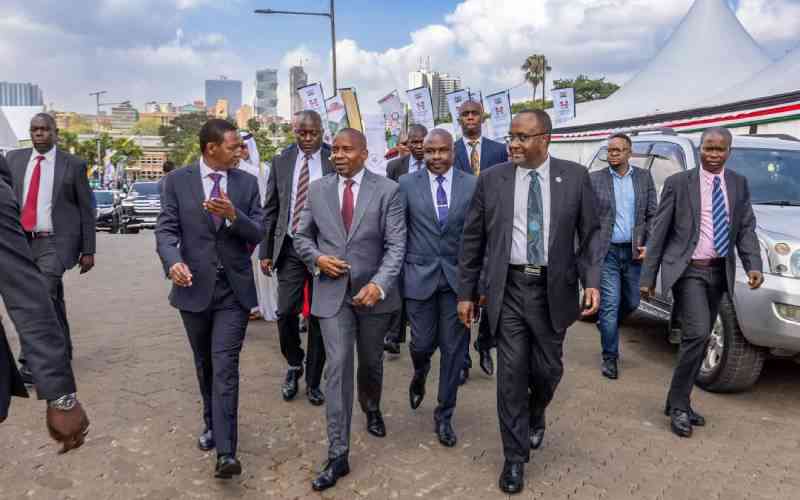Among Fortune 500 firms, less than 10 per cent of strategies formulated are executed. In the majority of cases — estimated at 70 per cent — the real problem isn’t bad strategy, it’s bad execution.
One of the causes of bad execution is a lack of awareness. For instance, among Fortune 500 firms, it was documented that 95 per cent of the typical workforce does not understand the strategy.
If your employee productivity goes down, should you pay them more? Do you know what really matters to your employees? This is where a strategy comes in.
For a long time, many CEOs assumed there was a direct correlation between employee compensation and performance. But its not compensation that affects performance — it’s employee motivation.
But can employee motivation in itself lead to improved organisational performance? Not quite.
There is more convincing evidence that improving employee engagement significantly improves company performance across a number of key areas, including profitability, productivity, customer satisfaction, innovation, health and safety, sickness and absence, turnover and wellbeing.
It’s also a huge opportunity to gain long-term commitment and discretionary effort from your team, which will ultimately lead to higher sales and fewer mistakes.
Biggest Challenge
As CEO, keeping your employees engaged is perhaps the biggest challenge you face. However, there are numerous ways to achieve employee engagement, including involving them in your business planning processes, creating a knowledge-sharing system, encouraging knowledge sharing and creating an internal magazine.
However, the use of social media has taken corporate engagement to the next level, and brings in customers, among other stakeholders.
The story of stray lions last month, for instance, sparked wild jokes on social media and kept many corporates — local and international — engaged. Kenya Wildlife Service (KWS) officials were forced to respond fast with a statement just to contain the situation.
Kenya Commercial Bank (KCB), whose trademark logo is a lion, pounced on the story, tweeting an image of a walking lion with the message: “When your customers don’t come to you, you go to them. #TembeaKenya”.
A Twitter user turned the joke on KCB and said Mafisi (hyenas) Sacco — a playful reference to hot-blooded males — had decided that the face of a hyena would replace that of a lion on the KCB logo “until the lion is recovered”.
RMA Motors Kenya also joined in on the corporate banter: “If you spot a lion, contact KWS, if you spot a Jaguar, it probably got loose from the RMA showroom. Contact us.”
Another establishment that got drawn into the den was Nairobi’s Simba Saloon. “Have KWS wardens checked if the stray lions are at The Simba Saloon at Carnivore?” a Facebook user joked.
Stay informed. Subscribe to our newsletter
For organisations being smart about it, social media can achieve a lot of strategic goals. For instance, L’Oréal used social media to create a sense of community within the business, not only increasing engagement internally, but also creating an attractive employer brand externally.
A chief operating officer at a Kenyan hospital said by using messaging application WhatsApp, management can plan its day and involve employees in the process, as well as share knowledge as a unit.
But to achieve success, engagement efforts have to be aligned to the overall business strategy. Implementing unplanned ideas and activities without monitoring or measuring their impact is a waste of time and resources.
So how can you tell if the measures taken will lead to better employee engagement and corporate performance?
The hospital COO illustrates the answer. He said before the WhatsApp group, employees were less likely to be engaged outside their working hours, sticking to, “My shift is over, I need my me-time”.
But upon deployment of the group, some employees, when not on duty, would voluntarily respond to those on duty and help them out when necessary. It also brought cohesion. It became further evident to the COO that he did not always have to intervene when an issue was reported by other staff; those concerned solved it.
It makes sense, then, that higher employee engagement levels are going to result in workers being more motivated and productive, and also more likely to speak positively about your brand in the outside world. Ultimately it leads to a better company culture.
In that regard, social media, when used well, can enhance engagement, hence employee productivity — which leads to the realisation of strategic goals.
The writer is senior lecturer, strategy and competitiveness, Strathmore University.
[email protected]
 The Standard Group Plc is a
multi-media organization with investments in media platforms spanning newspaper
print operations, television, radio broadcasting, digital and online services. The
Standard Group is recognized as a leading multi-media house in Kenya with a key
influence in matters of national and international interest.
The Standard Group Plc is a
multi-media organization with investments in media platforms spanning newspaper
print operations, television, radio broadcasting, digital and online services. The
Standard Group is recognized as a leading multi-media house in Kenya with a key
influence in matters of national and international interest.
 The Standard Group Plc is a
multi-media organization with investments in media platforms spanning newspaper
print operations, television, radio broadcasting, digital and online services. The
Standard Group is recognized as a leading multi-media house in Kenya with a key
influence in matters of national and international interest.
The Standard Group Plc is a
multi-media organization with investments in media platforms spanning newspaper
print operations, television, radio broadcasting, digital and online services. The
Standard Group is recognized as a leading multi-media house in Kenya with a key
influence in matters of national and international interest.








